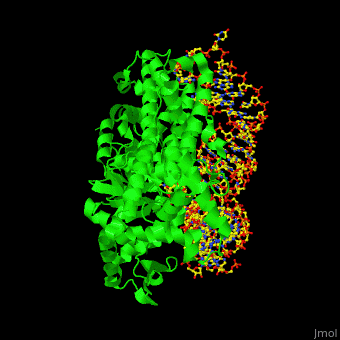Aminoacyl tRNA synthetase (aaRS) or aminoacyl tRNA ligase catalyzes the esterification of a specific amino acid to its cognate tRNA to form an aminoacyl-tRNA. The amino acid is transferred by the ribosome from the aminoacylated-tRNA onto a growing polypeptide chain. Class I of aaRS is a monomer or dimer, it has 2 highly conserved sequence motifs and it aminoacylates at the 2’-OH of an adenosine nucleotide. Class II of aaRS is a dimer or tetramer, it has 3 highly conserved sequence motifs and it aminoacylates at the 3’-OH of an adenosine nucleotide. CP1 domain of RS edits a mischarged aa-tRNA. Some of the crystal structures are complexes of the RS with their reactant analog: amino acid-sulfamoyl adenine (aa-SA).[1].
3D Structures of Aminoacyl tRNA synthetase
Aminoacyl tRNA synthetase 3D structures
One very interesting question in biology is how does an aminoacyl-tRNA synthetase recognize a particular tRNA and charge it with the correct amino acid? This is a challenging problem, since all tRNAs have the same general structure. Interestingly, different tRNA synthetases accomplish this goal in different ways.
The (GlnRS) interacts with both the anticodon loop and the acceptor stem. Genetic and biochemical data indicate that GlnRS interacts with all three bases of the , which are unstacked and splay outward so they can bind in separate recognition pockets of GlnRS. The 3' end of tRNAgln plunges deeply into a protein pocket that also binds the enzymes ATP and glutamine substrates.

